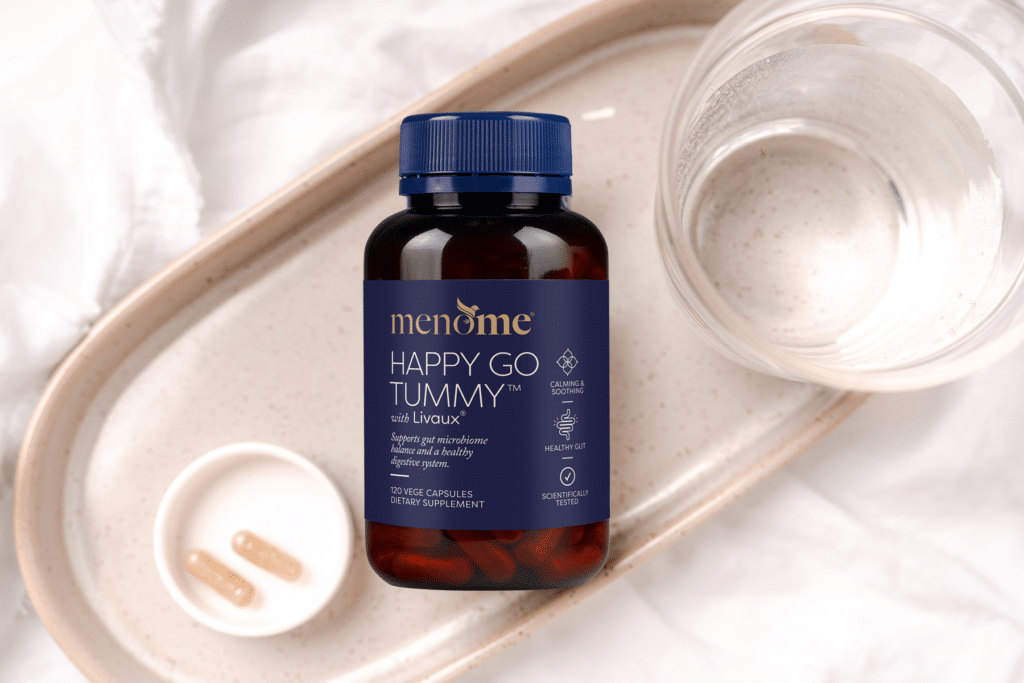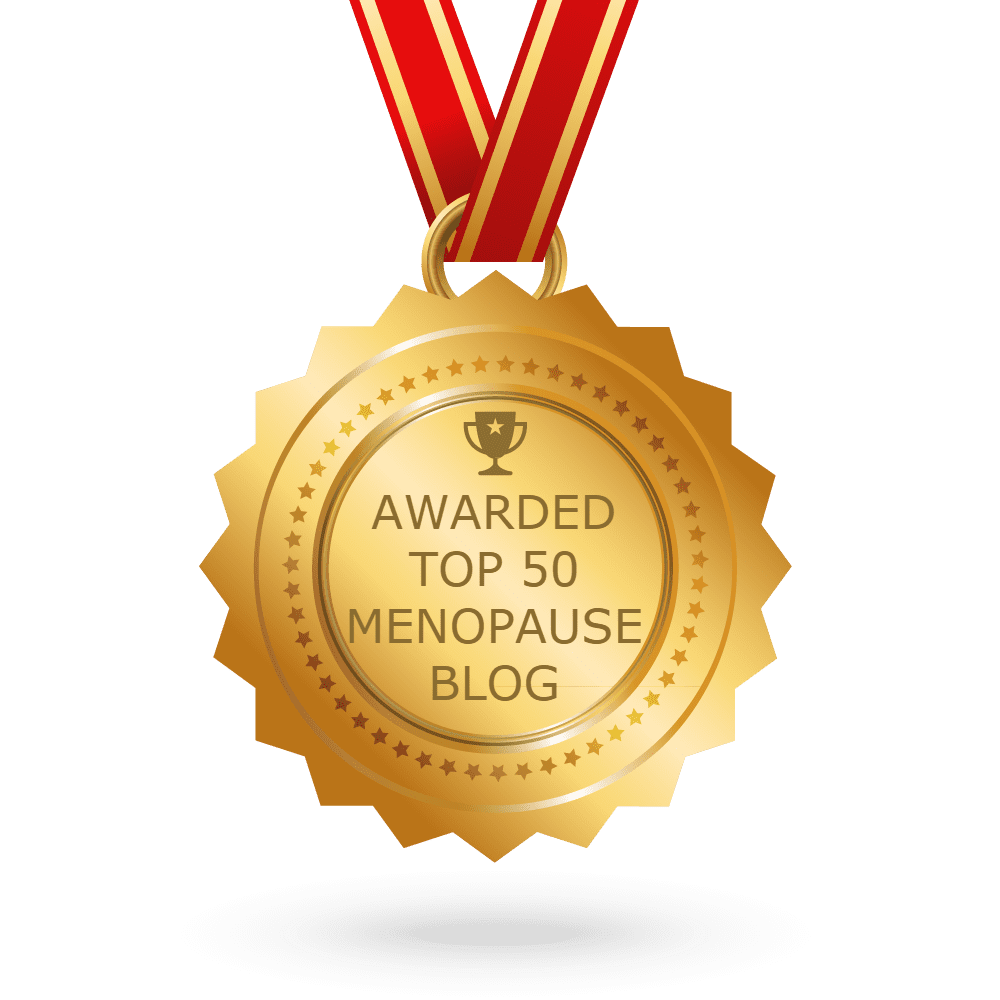Serotonin?
It’s the equivalent of your happy pill from nature!
What Is Serotonin?
I’ve mentioned it before – but to reiterate – the decline of estrogen in our ovaries during peri and post-menopause can affect the production of serotonin. Serotonin is a neurotransmitter (a chemical messenger that helps the brain function), aka our happy chemical. This can affect our mood, self-confidence, and the level of stress, irritability, depression, sleep and anxiety we feel.
Most of these are major issues for women during the meno years.
But you can take heart!

But first things first: did you know that around 90% of serotonin is made in your gut? That’s why keeping your digestive system in top shape is so important. Add to that the fact that our digestion changes during perimenopause – and even more by post-menopause – and it’s clear that supporting your gut is a smart move.
That’s where Happy Go Tummy® comes in. It’s a synbiotic, which means it combines prebiotics and probiotics to support your gut health. Simply adding it to your daily routine can help in lots of ways — including giving your serotonin a little boost.
And now… onto the foods that help lift your mood naturally!
Food Is Your Friend
As well as lifestyle factors like exercise and self-care (known serotonin boosters), you can look to your pantry and fridge to help keep serotonin levels on a level playing field.
Isn’t that good news? It’s a good idea to cover as many bases as possible in your bid to keep your serotonin up because it’s your soothing BFF courtesy of Mother Nature.
What Is Tryptophan?
A lot of your body’s serotonin is produced in the gut so it makes sense to look at what you’re ingesting. Food can boost an amino acid building block known as tryptophan, so serotonin can work with the brain. We can’t make tryptophan ourselves, so we must get it from our food.
we can’t make tryptophan ourselves so we must get it from our food. Share on X
But – and this is a big but – many of us unwittingly eat low-tryptophan foods that short-circuit the process. This includes things like non-healthy fast food (happily, we have some healthy options for fast food now), and refined carbohydrates like pasta, popcorn, crisps, etc. They’re addictive, we know, but they’ll bring you down so you pay a big price for that moment on your lips.
Serotonin itself can’t be found in food but tryptophan can Share on X
Serotonin itself can’t be found in food but tryptophan can. Most experts recommend mixing it with complex carbohydrates – foods like sweet potatoes, oats, brown rice, apples and berries.
Tryptophan is usually found in high protein foods and mixing it with complex carbohydrates (not refined carbs) appears to enhance its ability to boost serotonin.
A Note On Carbohydrates
You’ll often see me recommend Meno-She’s cut right back on carbs because we don’t process them as well as we once did. This is true. To be clear though, when I say this I’m talking about refined carbohydrates and not nutrient-dense, healthy carbohydrates such as vegetables, whole grains and some fruits. After all, it’s carbohydrates that fuel our energy.
That said, let’s take a look at six high tryptophan players that may work to keep you happy, healthy and sleeping well.
6 Serotonin-Boosting Foods
1. Eggs
Pretty much a mainstay for most of us, eggs are loved because they’re easy and high in protein. Bonus? They’re also loaded with tryptophan. The yolks are potent tryptophan players.
2. Green Leafies
I always recommend oodles of dark green leafy vegetables for 40+ ladies and their tryptophan levels are another good reason to do so.
3. Soy
Soy is controversial in some corners but for meno ladies, it’s a goody as well as being a rich source of tryptophan. Products made from soy contain isoflavones which mimic estrogenic activity and may help our estrogen levels. Indeed, Asian women who eat a diet high in soy have been found to have less body temperature fluctuations and other signs.
4. Nuts and seeds
Both of these are great plant sources of tryptophan so present a good option for vegetarians and vegans, and a delicious alternative for everyone else. Try seed cycling for added benefits.
5. Salmon
Fish lovers can rejoice because salmon is rich in tryptophan amongst all of its other goodies like omega-3 fatty acids and vitamin D.
6. Cheese
There are a lot of cheese fans out there so knowing it’s a good source of tryptophan will be music to your years.
NB: It’s interesting to note that Healthline state that the tryptophan you find in food has to compete with other amino acids to be absorbed into the brain, so they feel it may not have much of an effect on your serotonin levels.
From my point of view, eating well and eating healthily makes you feel happier anyway so it’s still good advice. If you’re worried, add to your tryptophan intake with a supplement.
Here’s to happier days.
#experience freedom










